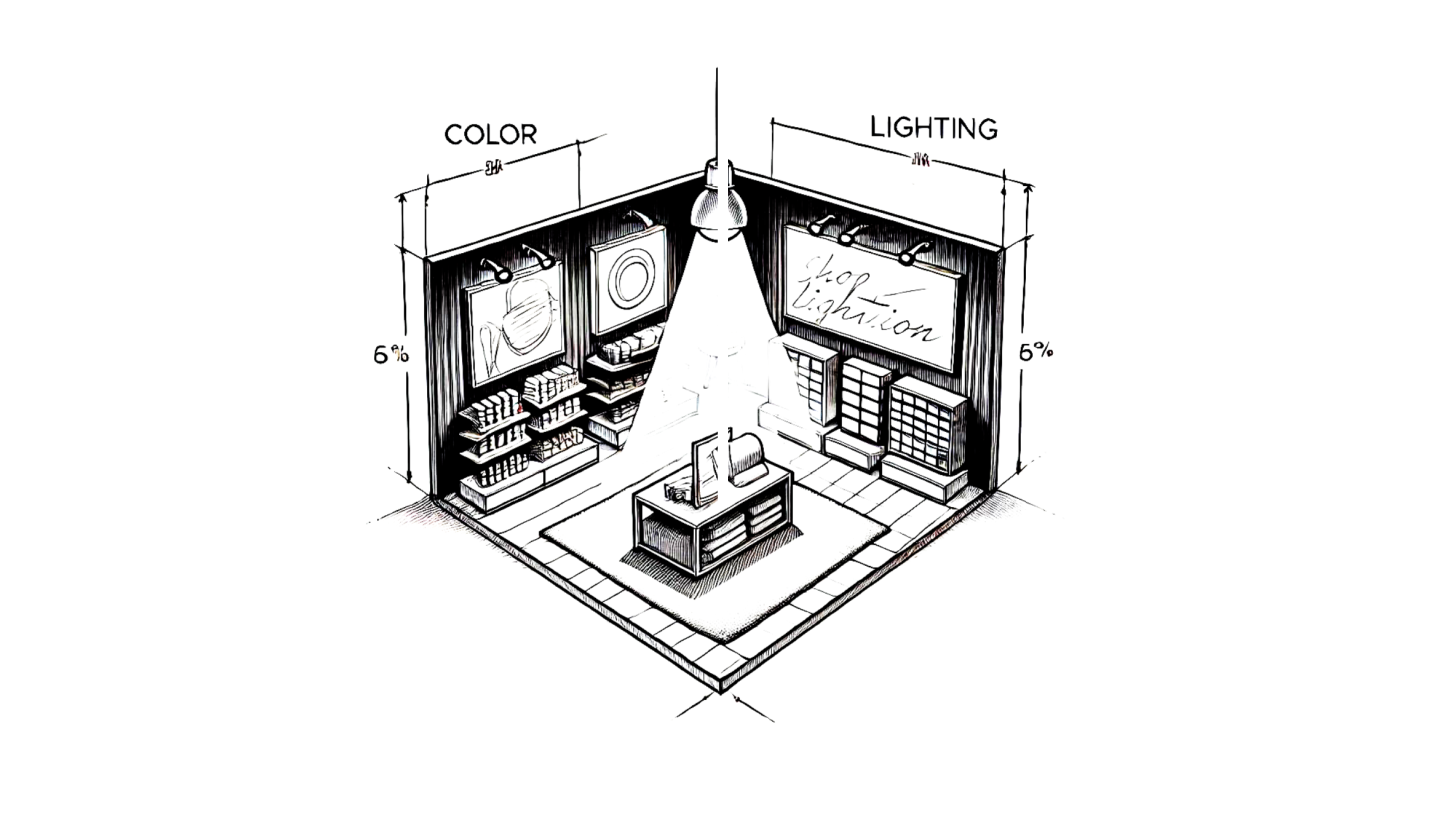Eye-Catching Displays
How Color, Lighting, and Signage Impact Shopper Attention
Introduction: Why Colors, Lights, and Signs Grab Our Attention
Imagine walking into a store, and you immediately notice a bright sign, a unique light, or an object in a specific color that catches your eye. Why do you notice it? The answer lies in how our brains respond to visual stimuli, such as color, lighting, and signage. These elements aren't just decorative — they are designed to grab our attention and influence our decisions. Whether you're strolling through a store or shopping online, these eye-catching elements are strategically used to guide your behavior, from what you notice first to what you ultimately buy.
The Psychology of Visual Retail Elements: A Brief Background
The psychology behind color, lighting, and signage in retail goes back to the work of psychologists and marketers in the early 20th century. Researchers like Walter Dill Scott, a pioneer in the field of advertising, argued that consumer behavior was deeply influenced by environmental cues. They found that things like bold colors, strategic lighting, and clear signage were key to getting a shopper’s attention. This foundation has continued to be built upon as scientists and retailers refine their understanding of what grabs attention and motivates purchases.
Historical Research: Early Experiments on Color and Lighting in Retail
One of the early experiments that explored the impact of visual elements on consumer behavior was conducted by the American Psychological Association in 1927. The "Lighting and Color in Retail Settings" experiment, led by researchers at the University of Chicago, tested how different light levels and color schemes affected consumer purchases. Researchers found that brightly lit displays and warm colors (like red and yellow) led to more attention and higher sales compared to dimly lit displays with cooler colors (like blue and green). The study, published in The Journal of Applied Psychology, helped solidify the idea that lighting and color could influence how customers engage with products and spaces.
Biological Basis: How Our Brain Reacts to Color and Light
Our responses to color, lighting, and signage are rooted in evolutionary biology and neuroscience. Bright colors, such as red or yellow, are attention-grabbing because they signify urgency or danger, which would have been essential for survival in the wild. This is why these colors continue to be effective in grabbing attention in modern settings. From a neurological standpoint, the brain processes visual information faster than text. It’s why we instinctively notice a bright sign or a well-lit display before reading any small print. Our brain is wired to focus on what stands out, a feature that developed as a survival mechanism to detect potential threats or rewards in our environment.
Recent Insights: Modern Research on Digital Signage and Shopper Behavior
Recent experiments have built upon earlier findings to better understand how modern technology impacts these visual elements. A 2020 study by researchers at Harvard Business School examined how digital signage impacts shopper behavior in retail spaces. The experiment, "The Impact of Digital Signage on Consumer Decision Making," found that dynamic, interactive signage (such as digital displays with changing visuals or messages) led to a 20% increase in consumer engagement compared to static signage. This research, published in the Journal of Marketing, highlights how evolving technology is now a key player in influencing consumer attention in-store.
Practical Tips: Using Color, Lighting, and Signage to Engage Shoppers
So, what does all of this mean for businesses today? If you want to grab attention and keep customers engaged, focus on the power of color, lighting, and signage in your retail space. Use bright, warm colors to create a sense of urgency and excitement, while strategic lighting can help highlight key products or areas. Digital signage offers an interactive way to engage shoppers, drawing them in with changing content that keeps the experience fresh. By understanding how these visual elements impact attention and decision-making, businesses can design more effective in-store experiences that drive sales and customer loyalty.
More Behavioral Science





How Posting at the Right Moment Makes Content More Likely to Go Viral